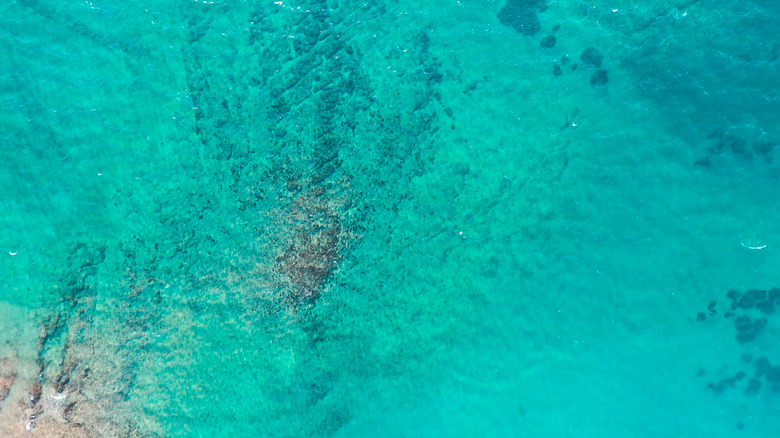List Of Ocean Ecosystems
While the ocean is divided into zones and layers, these are broad categories that do not specify the diversity of ecosystems present. Each layer or zone includes several ecosystems, which have adapted to specific habitats found in those oceanic regions. Marine life can be found from lush shorelines to deep, oceanic trenches.
Oceanic Zones and Layers
Oceanic Zones and Layers
The ocean is divided into four major zones: the intertidal, neritic, oceanic and abyssal. The intertidal zone is the area of coastal sea which is affected by tidal changes. This zone contains diverse ecosystems, such as beaches, estuaries and tidal pools. The neritic zone is shallow ocean extending to the edge of the continental shelf, and the oceanic zone is the area located over the abyssal plain. The abyssal zone refers to the vast, dark plains of the ocean basin's floor. It also includes the volcanic rifts of underwater mountain ranges. While the zones are divided like water columns over specific areas of a tectonic plate, the ocean layers are divided based on depth and light regime. The uppermost oceanic layer, called the epipelagic, is followed by the mesopelagic and the bathypelagic in increasing depth; the abyssopelagic is the deepest layer.
Shoreline Ecosystems
Shoreline Ecosystems
Many different ecosystems and communities thrive on the changing shorelines of oceans. Sandy beaches support birds, crustaceans and reptiles, while tidal pools provide temporary refuge for stranded sea creatures and optimum hunting grounds for predators. Estuaries and marshes have a mixture of freshwater and seawater, supporting a diverse community of organisms. These smaller ecosystems are all part of the larger community that inhabits an ocean's shoreline.
Coral Reefs
Coral Reefs
Coral reefs are formed by dead and living coral. Although these organisms appear plant-like, they are actually tiny animals. Some coral are solitary, but most are colonial and form a larger coral made of individual polyps. The remains of dead coral gradually accumulate to form reefs, which support a wide variety of marine animals, such as:
- fish
- octopi
- eels
- sharks
- crustaceans
Mangroves
Mangroves
This ecosystem revolves around mangrove trees, which is a non-taxonomic classification for trees and shrubs that can live in wet, saline habitats. Mangrove ecosystems are found on a quarter of the world's tropical shorelines. This environment is a breeding ground for many species of fish and birds, and is diverse in specialized plant species.
Open Ocean
Open Ocean
The open ocean is a broad ecosystem that exists in the light-rich surface layer. The producers for this ecosystem are photosynthetic plankton, which are eaten by fish, rays and whales. Many predators in the open ocean feed on fish and other predators. This ecosystem supports the largest mammal in the world, the blue whale. Ocean currents are an important factor in the life cycles of organisms in the open ocean, bringing nutrient-rich water from other areas.
Deep Ocean
Deep Ocean
Deep ocean ecosystems are devoid of light and depend on sunken remains and organic materials from the upper oceanic layers. The ocean floor supports various scavengers and their predators, which all benefit from the organic matter drifting down to the floor. The volcanic rifts which form new seabed also support an extremely specialized community of organisms that depend on superheated, smoking vents in the earth's surface. These vents spew out hot water that is rich in minerals. Chemoautotrophic bacteria create energy by oxidizing the sulfur from the vents, and provide food for crab and shrimp species. Tube worms also harbor the energy from chemical reactions to support life, making solar energy absolutely unnecessary for the survival of this ecosystem.
Cite This Article
MLA
Land, Mitchell. "List Of Ocean Ecosystems" sciencing.com, https://www.sciencing.com/list-ocean-ecosystems-8428086/. 22 November 2019.
APA
Land, Mitchell. (2019, November 22). List Of Ocean Ecosystems. sciencing.com. Retrieved from https://www.sciencing.com/list-ocean-ecosystems-8428086/
Chicago
Land, Mitchell. List Of Ocean Ecosystems last modified August 30, 2022. https://www.sciencing.com/list-ocean-ecosystems-8428086/
